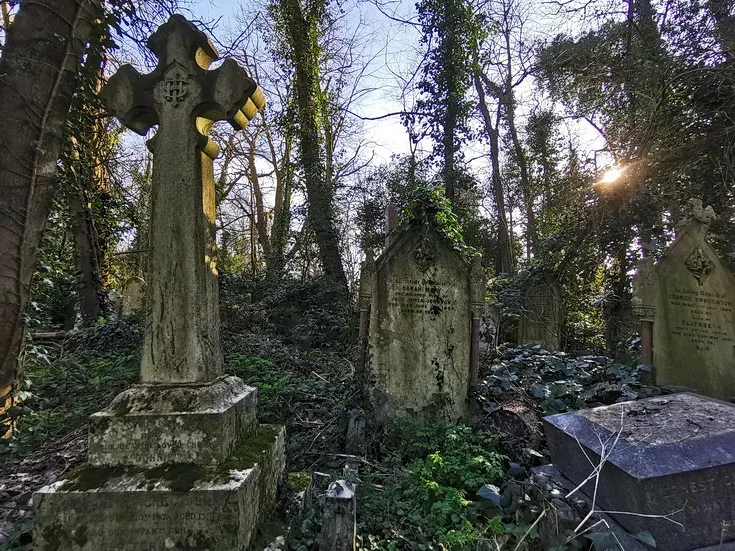Bokor Hill Station
Bokor Hill Station: A Forgotten Treasure of Cambodia
Introduction
Bokor Hill Station is one of the most fascinating and mysterious places in Cambodia, located in the Kampot province. Built by the French in the 1920s, this hill station has a rich and tumultuous history. Known for its breathtaking beauty and ghostly atmosphere, Bokor Hill Station is now a popular destination for tourists seeking off-the-beaten-path adventures and history enthusiasts.
Construction and the French Colonial Period
The construction of Bokor Hill Station began in 1921 under French colonial administration, aiming to create a mountain retreat to escape the suffocating heat of the Cambodian plains. Situated at 1,080 meters above sea level, the station offered a cool and healthy climate, ideal for the French colonists. The construction was completed in 1925 after years of hard work and sacrifices, costing the lives of many Cambodian workers.
The complex included a grand hotel and casino, a Catholic church, a royal residence, a post office, and numerous villas and leisure facilities. The Grand Hotel Bokor Palace, in particular, was the hub of social activity where the colonial elite could enjoy luxury and entertainment in an exclusive environment.
Decline and Abandonment
The peak of Bokor Hill Station was short-lived. With the end of French colonial rule and Cambodia’s independence in 1953, the station began to lose its luster. During the 1970s, the region was affected by the Cambodian civil war and the rise of the Khmer Rouge, who used the station as a military base. The armed conflicts and political instability led to the complete abandonment of the site.
The structures were left in ruins, and vegetation began to reclaim the territory. The ghostly atmosphere of Bokor Hill Station, with its abandoned buildings shrouded in mist, attracted the interest of adventurers and filmmakers, making it a cult spot for paranormal and urbex (urban exploration) enthusiasts.
Tourist Revival
In recent decades, Bokor Hill Station has experienced a kind of revival. The Cambodian government, along with private investors, has initiated restoration and tourist development projects. While some criticize the commercialization of the site, many acknowledge that these efforts have helped preserve and enhance an important part of Cambodian history.
Today, Bokor Hill Station is a popular tourist destination that attracts visitors with its unique combination of history, nature, and mystery. Tourists can explore the ruins of the Grand Hotel Bokor Palace, visit the abandoned Catholic church, and admire the panoramic views of the Gulf of Thailand. Additionally, the station serves as a starting point for excursions into the Bokor National Park, a protected area rich in biodiversity.
Main Attractions
Grand Hotel Bokor Palace: An icon of French colonial architecture, this abandoned hotel offers a fascinating glimpse into the past. Its empty rooms and ruined corridors are enveloped in an aura of mystery and nostalgia.
Abandoned Catholic Church: Built by the French to serve the colonial community, this stone church is one of the most evocative spots at the station. The solitary structure, often shrouded in mist, creates an almost surreal atmosphere.
Popokvil Waterfalls: Located near the station, these waterfalls offer a natural refuge where visitors can relax and enjoy the surrounding beauty of nature.
Wat Sampov Pram: A Buddhist temple situated atop the hill, offering spectacular views of the surrounding region. The temple is still active and represents an important place of worship for the local population.
Conclusion
Bokor Hill Station is much more than just a tourist site; it is a place where history and nature intertwine in a fascinating way. From the decaying elegance of the Grand Hotel Bokor Palace to the ghostly atmospheres of the abandoned church, every corner of this station tells a story of past glory and present rebirth.
Visiting Bokor Hill Station means taking a journey through time, exploring the remnants of a distant era, and immersing oneself in the wild beauty of Cambodian nature. For those seeking off-the-beaten-path adventures and a taste of mystery, Bokor Hill Station remains an unmissable destination.
During the construction of Bokor Hill Station, it is said that about 900 people died. This figure represents a tragic part of the site’s history.
The Workers’ Sacrifice
The construction of Bokor Hill Station began in 1921 under French colonial rule. The goal was to create a mountain retreat to escape the suffocating heat of the Cambodian plains. The chosen site was situated at 1,080 meters above sea level, on a hill in the Damrei mountain range.
The construction required enormous human effort. The workers, mostly Cambodians recruited from rural areas, were forced to operate under extremely difficult conditions. Basic infrastructure was scarce, and the working conditions were very harsh. Malaria, accidents, and physical exhaustion contributed to the tragic death toll. It is estimated that around 900 workers died during the construction process, highlighting the human cost of this ambitious colonial project.
Implications and Historical Memory
The deaths of so many workers during the construction of Bokor Hill Station is an aspect often overlooked in modern tourist narratives of the site. However, it is crucial to understand the complete history of the place. The loss of human lives underscores the brutal impact of colonialism and the price paid by local peoples for development projects initiated by colonizers.
Today, when visitors explore the ruins of Bokor Hill Station, they are rarely aware of this tragic past. However, it is important to remember and honor the memory of those who lost their lives during the construction. Their story is a testament to human sacrifice and the injustices that accompanied many colonial projects around the world.
Conclusion
Bokor Hill Station, with its charm and ghostly atmosphere, hides a past marked by sacrifice and suffering. The death of about 900 workers during its construction represents a dark part of its history that deserves to be remembered. Visiting Bokor Hill Station means not only exploring a tourist site but also reflecting on the lives of those who contributed, with their toil and sacrifice, to the realization of this ambitious project.
The deaths of the workers during the construction of Bokor Hill Station were caused by a combination of factors related to harsh working conditions, diseases, and lack of adequate safety measures. Here is a detailed analysis of the main reasons:
Extremely Harsh Working Conditions
Natural Environment and Climate
Altitude and Mountainous Terrain: The station was situated over 1,000 meters above sea level in a remote mountainous area. The rugged terrain made the work physically exhausting and dangerous.
Climatic Conditions: The altitude brought cool and foggy weather, which could be difficult for workers not used to such conditions. Frequent rain and thick fog increased the risk of accidents.
Diseases
Malaria and Other Tropical Diseases
Malaria: The region was infested with malaria-carrying mosquitoes, an endemic disease in tropical areas. Many workers died from untreated malarial infections.
Other Diseases: Poor living and working conditions favored the spread of other infectious diseases, such as dysentery and respiratory infections.
Work Accidents
Infrastructure and Tools
Lack of Modern Equipment: Workers had rudimentary tools to carry out extremely difficult tasks, such as building roads and buildings on steep terrains.
Accidents: Landslides, falls, and accidents with heavy equipment were common. The lack of adequate safety measures increased the risk of serious and fatal injuries.
Physical Exhaustion
Fatigue and Effort
Intense and Prolonged Work: Workers were often forced to work many hours a day, with few breaks and without adequate food or rest.
Exploitation Conditions: Forced labor and semi-slavery conditions were frequent under colonial rule. The pressure to complete the project quickly led to extreme use of the workforce.
Lack of Medical Care
Inadequate Healthcare
Absence of Doctors and Medicines: Medical facilities were nonexistent or very limited. Workers who fell ill or were injured often received inadequate or no care.
Poor Nutrition: Poor diet contributed to weakening the workers, making them more susceptible to diseases and less able to recover from injuries and fatigue.
Conclusion
The deaths of workers during the construction of Bokor Hill Station were the result of a lethal mix of extreme working conditions, diseases, accidents, and exploitation. This tragic chapter of history highlights the hardships and sacrifices imposed on local workers during the French colonial period. Today, remembering these lost lives is essential to fully understand the human cost of colonial projects and to honor the memory of those who contributed with their sacrifice to the construction of this historic site.







